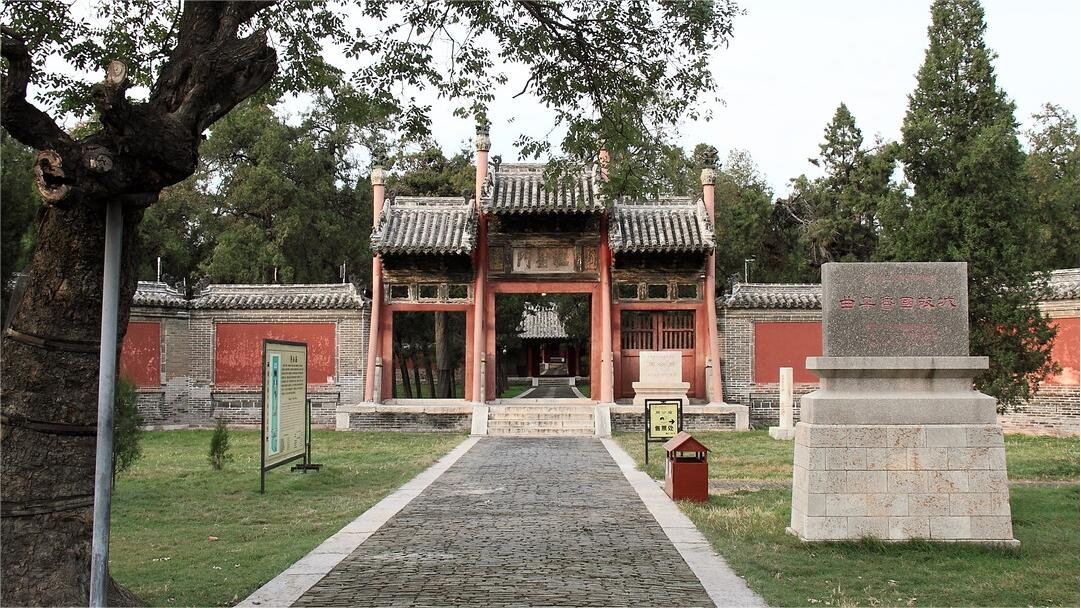Zhougong Temple (周公庙), also known as Wenxian King Temple (文宪王苗), is dedicated to Zhougong (Duke of Zhou) and is located in Qufu City, Shandong Province. The temple is also referred to as Yuansheng Temple due to Zhougong being titled “Yuansheng” (Primordial Sage) by feudal emperors. Qufu’s Zhougong Temple is one of the three major Zhougong Temples in China and has undergone multiple renovations during the Song, Yuan, Ming, and Qing dynasties.
Zhougong, whose personal name was Ji Dan, was the fourth son of King Wen of Zhou. He is known as Zhougong because his fief was in Zhou. Zhougong assisted King Wu in overthrowing the Shang Dynasty and establishing the Zhou Dynasty. He formulated rituals and music systems and was enfeoffed in the state of Lu, the ancient land of Shaohao. When King Cheng, Wu’s successor, was young, Zhougong served as his regent. Zhougong’s son, Boqin, was sent to rule Lu in his stead, becoming the first Duke of Lu. Due to Zhougong’s significant contributions to the Zhou Dynasty, King Cheng granted Boqin the privilege of establishing a grand temple in Lu in 1028 BC to worship Zhougong with imperial rites after his death.
Table of Contents
Basic Information
| Estimated Length of Tour | 1 hour |
| Ticket Price | 50 RMB, but if you have bought the combined ticket for the three Confucius sites, it will be free |
| Opening Hours | 8.30 – 17.00 |
| Telephone Number | 0086-0537-4712172 |
Location and Transportation
Zhougong Temple is located on Zhougongmiao Street in the northern part of Qufu City, Shandong Province. To get there, you can take bus Qufu 11, Qufu 19, Qufu 20, Qufu 25, Qufu 26, Qufu 27, Qufu 28, Qufu 39, Qufu 6, Qufu D51, or Qufu K06 and get off at Xiaobeiguan Crossing Stop (小北关路口站).
Layout of Zhougong Temple

Zhougong Temple is a rectangular complex surrounded by red walls. It consists of three courtyards with 57 buildings, including halls, pavilions, gates, and archways, covering an area of about 75 acres. The temple is shrouded in ancient trees, adding to its historical ambiance. To the northwest of the temple lies an elevated area known as “Wangfu Terrace” or “Boqin Terrace,” which is believed to be the site where Boqin, Zhougong’s son, would look westward and pay respects to his father.
The entrance to Zhougong Temple, like the Confucius Temple, is called “Lingxing Gate.” This gate is a wooden archway covered with gray tiles, featuring four layers of bucket arches. Inside the main gate is the first courtyard, with a central north-south path leading directly to the second gate. On the eastern and western sides of the courtyard, there are outward-facing stone archways. The eastern archway is inscribed with “经天纬地,” praising Zhougong’s ability to use the heavens and earth as a model for governing the world and restoring order. The western archway is inscribed with “制礼作乐,” commending Zhougong for establishing the rituals and music systems that laid the foundation for governance through virtue and propriety in successive feudal dynasties.

The second gate of Zhougong Temple is called “承德门 (Chengde Gate).” Inside this gate lies the second courtyard, where a pavilion housing a stele stands on the eastern side of the path. Behind the stele pavilion is the third gate, “达孝门.” Entering Daxiao Gate brings one to the third and central courtyard of Zhougong Temple. Here stands the main hall, “Yuansheng Hall,” which is the temple’s principal building.
Yuansheng Hall is an imposing structure, standing 11.4 meters tall with five bays in width and three bays in depth. It features six beams supported by twenty-four columns, with layered bucket arches and gold-painted red lacquer. Inside the hall, a large plaque inscribed with “明德勤施” (Bright Virtue and Diligent Application) hangs prominently. On either side of the hall, there are large wooden couplets with golden inscriptions, written by Emperor Qianlong of the Qing Dynasty. In the eastern corner of the hall, a statue of Boqin, the Duke of Lu, sits on a Sumeru pedestal facing west. The statue portrays him with a white face and black beard, wearing ceremonial attire, in a respectful posture without a shrine.


